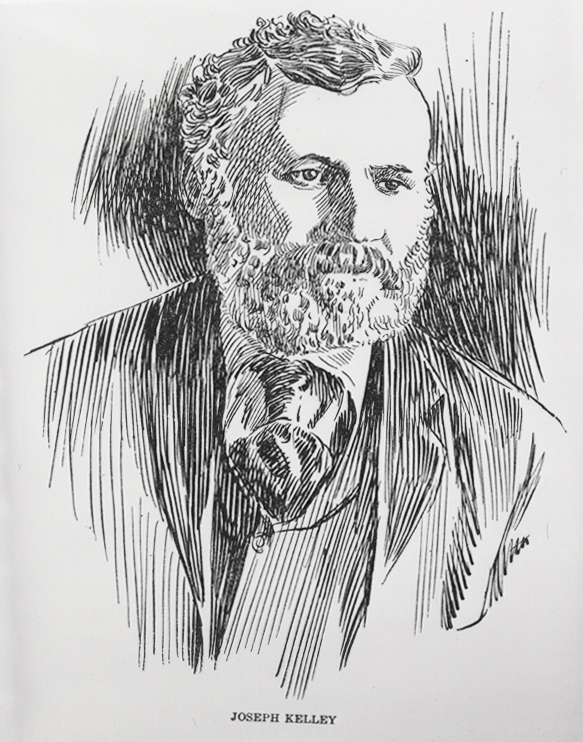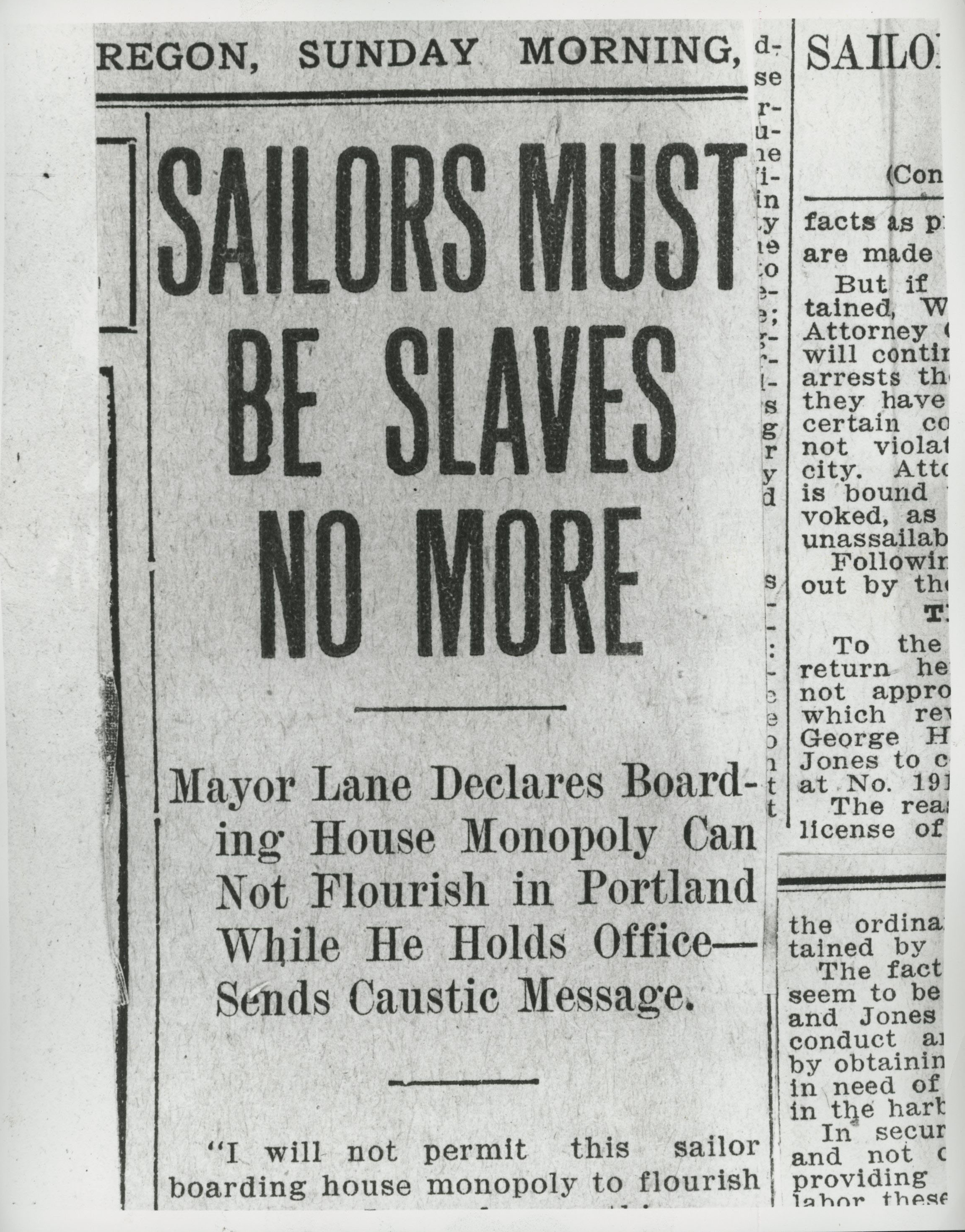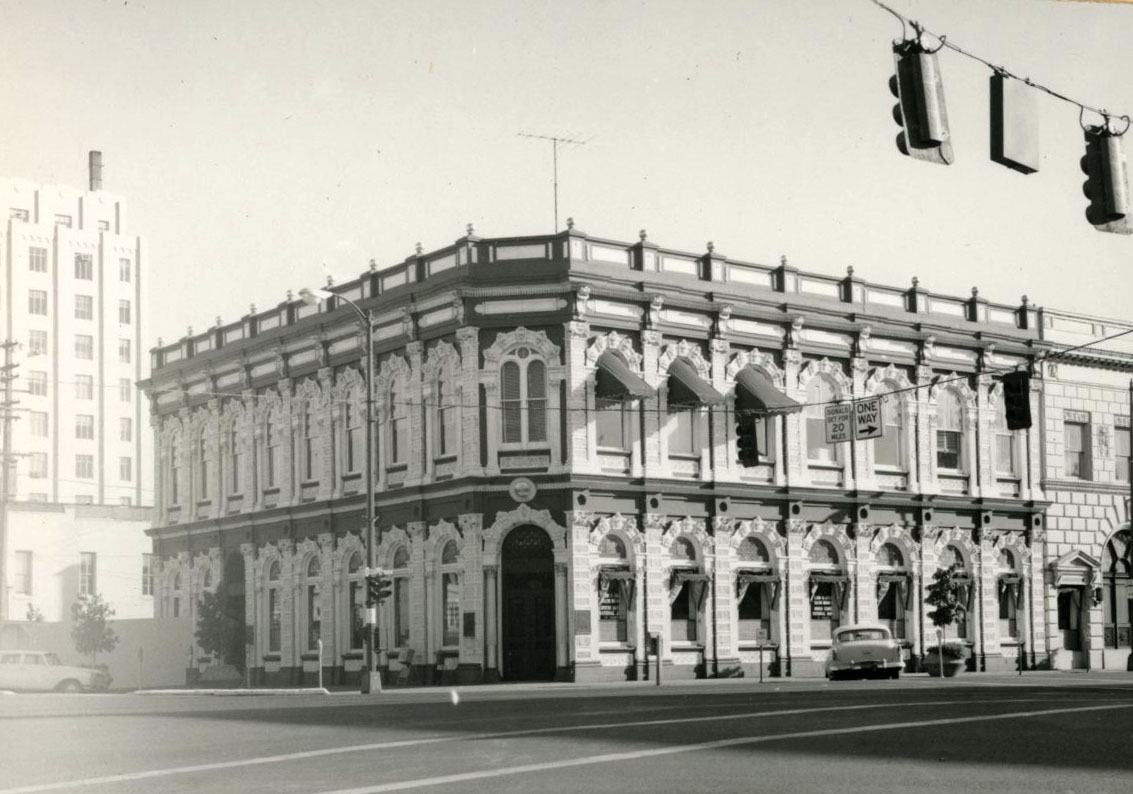The Portland Seamen's Friend Society was organized in 1877 by Reverend R.S. Stubbs and prominent Portland merchants, including Henry Corbett, William S. Ladd, Simeon Reed, and Edward Quackenbush. An affiliate of the American Seamen's Friend Society in New York, its mission was to promote the "temporal, moral and spiritual welfare of the Seamen, Steamboatmen and Longshoremen, visiting or belonging to this port." The international labor force served by the society was critical to the maritime trade economies of Portland and the greater Willamette and Columbia river valleys.
The life of a nineteenth-century sailor was not an easy one. Stigmatized by society, paid low wages, and suffering appalling work conditions and brutal discipline, "Poor Jack" did not even share the same legal rights as other workers. As late as 1897, the U.S. Supreme Court ruled that seamen were not covered by the Thirteenth Amendment’s ban on involuntary servitude, noting that they were "deficient in that full and intelligent responsibility for their acts which is accredited to ordinary adults."
Many sailors toiled on the high seas against their will. In ports all along the Pacific Coast and across the globe, employment brokers found crews for sailing vessels through the quasi-legal practice of crimping (third-party trading in seamen's labor contracts, often obtained through entrapment and forced debt) and Shanghaiing—essentially kidnapping and enslavement. According to historian Denise Alborn, the Columbia River had an especially "vile reputation on an international scale," with notorious Astoria and Portland "crimps" Bunco Kelly, Larry Sullivan, and Jim Turk fueling maritime legends. Although widely condemned, crimping could not have flourished without the collaboration of ship captains, port officials, police, and lodging house and saloon operators.
Like similar organizations in Astoria, Tacoma, and San Francisco, the Portland Seamen's Friend Society was formed to fight the evils of crimping, and to better the lot of seamen by providing lodging, provisions, books, advocacy, and evangelism. The society's bethel (seamen's chapel), kitchen, reading room and chaplain's quarters opened at Third and Davis in 1879. As with many nineteenth-century charitable organizations, it drew its roots from the broader evangelical reform movement, which sought to improve the individual and society through the values of Protestant Christianity, temperance, and good works. In his 1887 annual report, Portland chaplain Richard Gilpin noted that he had preached to 3,478 individuals in the bethel, visited 114 ships, taught Bible study and singing classes, and succeeded in persuading forty sailors to sign "the teetotal pledge."
Raising funds from churches and local and international businessmen, the society built a three-story, Justus Krumbein-designed Mariners' Home in 1882, an alternative to the waterfront lodging houses that were often complicit in crimping. In 1889, a new bethel church was constructed adjacent to the Mariners' Home. However, weakened by internal squabbling, conflicts with other organizations, and unmanageable debt, the society was forced to sell the buildings in 1903. In time, the structures were integrated into the fabric of Portland's New Chinatown, housing the Hip Sing Association and other Chinese organizations and businesses.
The Portland Seamen's Friend Society carried on into the second decade of the twentieth century, by which time steamships were eclipsing sailing vessels (with their need for large crews of unskilled seamen), and changes in maritime law and stronger unions began to improve conditions for seamen. The Mariners' Home and Seamen's Bethel buildings still stand at Third and Davis in Portland's Skidmore/Old Town and New Chinatown/Japantown historic districts, reminders of the struggles of earlier generations of maritime workers, and the individuals and institutions that sought to protect them.
-
![Joseph "Bunco" Kelly, owner of sailor's boarding house in Portland.]()
Kelly, Joseph, bb008451.
Joseph "Bunco" Kelly, owner of sailor's boarding house in Portland. Oreg. Hist. Soc. Research Libr., bb008451
-
![Larry Mikola Sullivan of firm Sullivan, Grant Bros. & McCarron.]()
Sullivan, Larry Mikola, bb005647.
Larry Mikola Sullivan of firm Sullivan, Grant Bros. & McCarron. Oreg. Hist. Soc. Research Libr., bb005647
-
![James Turk, owner of sailor's boarding house in Portland at corner of First and B (Burnside).]()
Turk, James, bb005648.
James Turk, owner of sailor's boarding house in Portland at corner of First and B (Burnside). Oreg. Hist. Soc. Research Libr., bb005648
-
![Henry Winslow Corbett.]()
Corbett, Henry Winslow, bb008483.
Henry Winslow Corbett. Oreg. Hist. Soc. Research Libr., bb008483
-
![Simeon G. Reed.]()
Reed, Simeon, bb008480.
Simeon G. Reed. Oreg. Hist. Soc. Research Libr., bb008480
Related Entries
-
![Shanghaiing in Portland and the Shanghai Tunnels Myth]()
Shanghaiing in Portland and the Shanghai Tunnels Myth
Since the 1970s, a myth has grown up that propounds the existence of a …
-
![William S. Ladd (1826-1893)]()
William S. Ladd (1826-1893)
At age twenty-seven, William Sargent Ladd was the youngest mayor to eve…
Related Historical Records
Map This on the Oregon History WayFinder
The Oregon History Wayfinder is an interactive map that identifies significant places, people, and events in Oregon history.
Further Reading
Alborn, Denise M. " Crimping and Shanghaiing on the Columbia River." Oregon Historical Quarterly 93 no. 3 (Fall 1992): 263-291.
Holbrook, Stewart. "Bunco Kelly, King of the Crimps." In Brian Booth, ed. Wildmen, Wobblies & Whistlepunks: Stewart Holbrook's Lowbrow Northwest. Corvallis, Oregon: Oregon State University Press, 1992. Originally published in American Mercury, 1948.
Starin, Nicholas T. and Liza Mickle. National Historic Landmark Nomination Form, Skidmore/Old Town Historic District, 2008.







